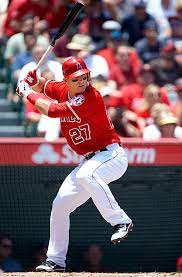When to Implement a Leg Kick for a Hitter
Many hitters from the past and present have implemented a leg kick to successful results in the batter's box. Like all hitting mechanics there must be a purpose behind what is being used. If a hitter does notknow the why he is using a leg kick, then that can be detrimental to his development and performance. Any hitting move can cause problems if it is not being used properly. In this post I will go over the purpose behind using a leg kick and how to implement it properly.
There have been many successful hitters statistically that did not have a leg kick initially, but then implemented a leg kick afterwards and were still successful. One collegiate hitter that had this as the case was the University of Tennessee's Chris Burke. When he was a sophomore at Tennessee, he finished with a batting average of .400 and was an All-SEC selection and All-American. Despite hitting for average, Burke was challenged in his exit meeting to experiment and find a way to get his hands and front foot seperated better to engaged his body to hit for more power.
That summer Burke experimented and discussed with different hitters on how to engage his body to seperate his hands from his front foot and to hit for more power. Finally, he came upon a leg kick which allowed him to be better seperated at foot strike and to engage the ground more to drive the ball farther and hit more power. He went from barely hitting any home runs in batting practice to hitting several home runs per batting practice round because of his leg kick. Therefore, the main reasons to use a leg kick is to either seperate the hands and front foot, improve rhythm, or to develop more power.
The leg kick is so successful at developing power because the lower half of the body is engaged with the load. For the load to be successful, the core of the hitter needs to be tightened so that the hitter stays balanced and maintains a still head with the forward move. Below I will use images of one of baseball's best, Mike Trout and his leg kick for a visual example of a proper leg kick.
Setup
Every hitter must be in a good place to start their swing in order to have success. As you can see in the above image Trout has his hands close to his body, feet shoulder width apart, and his hips are hinged allowing him to to be balanced.
Starting Move
As Trout starts to move, he raises his front foot up.The foot should be raised beneath the front hip to maintain balance and to not move the head significantly enough for him to lose vision of the pitch.
Gaining Momentum
As his front leg is lifting, Trout's hands move backward at the same time his front leg is lifting. As he is lifting his leg, his core is tightened which is allowing his body to remain stable throughout the swing process. This stage is the start of the seperation of the hands from the front foot and allowing him to engage with the ground to develop quite the force onto the ball once contact with the pitch is made.
Foot Strike
Once at foot strike Trout has gained momentum and is about to unleash all the created ground force and seperation built up onto the baseball. Notice that his head has moved slightly lower than where he started, but this has not affected his vision of the incoming pitch. His front hip is starting to turn allowing for the momentum to be put into the swing to drive the baseball.
Contact and Follow Through
Each of these images are different pitches, but Trout is consistent with his swing. As the pitch is coming in, he is getting his hands on plane with the pitch. This allows him to deliver the barrel of the bat on the ball at contact. After this he follows through with extension and then finishes high to ensure that all of the force has been put into the baseball. In conclusion, a leg kick is a fantastic way to enhance power and improve seperation in the swing. With that being said, the leg kick needs to be used properly to receive the proper results.












Comments
Post a Comment